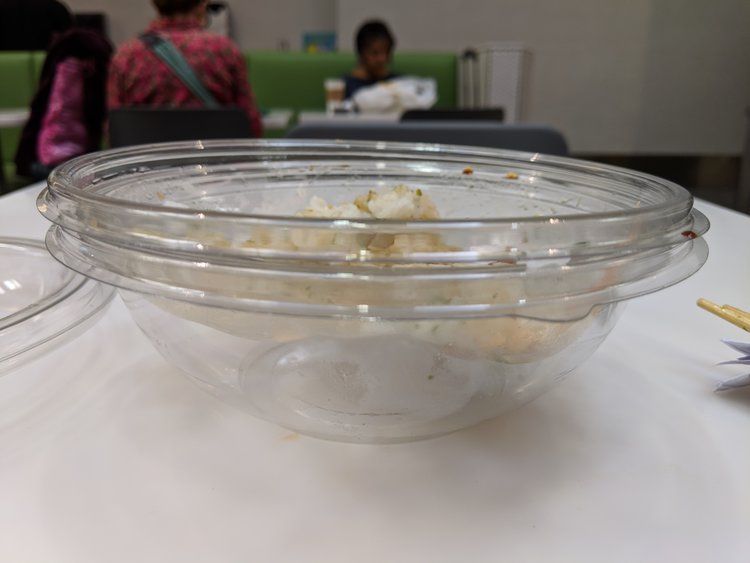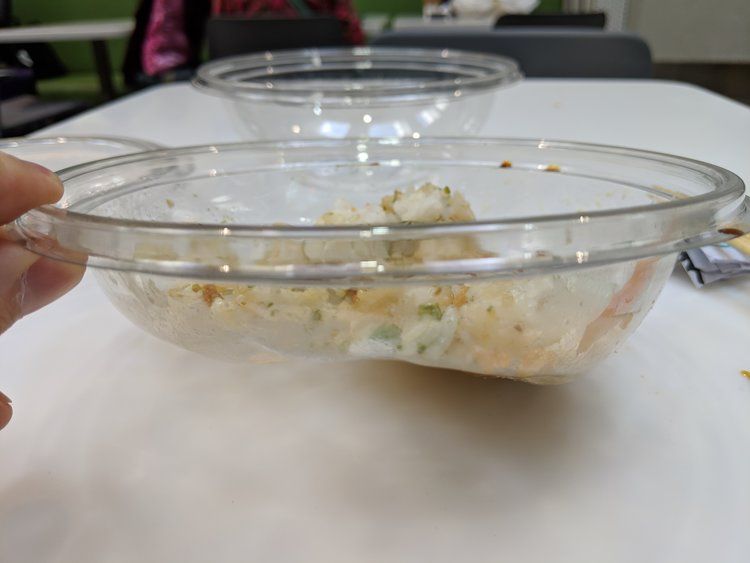Turning Lemonade Into Lemons
Product Background
Lemonade is a relatively new (started in 2008), up and coming restaurant chain currently located in in North and South California. They serve what I would broadly term “Fresh California Cuisine” and go after younger customer segments with Instagrammable food options. It is also backed by private equity giant KKR (Link) as well as a food investment firm Butterfly (Link).
UX Issue
While they have been around since 2008, they have mostly been located in Southern California. I finally had a chance to give it a try and ordered a very influencer friendly tuna poke bowl at one of their locations in Los Angeles International Airport (LAX). However, as you can see in the pictures, I only received half of what I thought I ordered. The bowl is actually composed of 3 pieces of plastic - the lid, a small bowl, and then a larger outer bowl that holds the smaller bowl. This is the classic trick of narrowing out the inside of a CPG container while keeping the exterior dimensions that same to fool buyers into thinking they are purchasing the same quantity.
In the first picture on the left, you can see the lid on the left, with the small bowl (that actually holds the food) stacked on top of the larger bottom bowl, which is a container presumably for the top bowl. You can already see how much of the bottom bowl is empty space where food should have gone.


In the second picture on the right, you can see just how much volume is taken away by the first bowl. The worst part is the bottom of the top bowl is slanted and presented to the consumer so that the side that has more volume is facing the consumer to make it appear full!
While this issue could be specific to their airport location, it is still incredibly deceptive to the consumer and an incredible waste of plastic for what is marketed as an “eco-friendly” restaurant concept. I would estimate that plastic usage is 2x greater than normal due to the addition of the bottom bowl while reducing brand loyalty and customer satisfaction if the consumer discovers the trick. I’ve only eaten there once, but I would never go back based on this singular experience.
Potential Remedy
The solution manifests in a couple of different ways:
- To maintain margins, increase prices so that whatever container you are serving food inside of can be a normal container and not carved out from the inside, reducing the chance customers will be dissatisfied. This also reduces plastic usage.
- To maintain margins, keep prices the same, but reduce the size of the bowl and eliminate the additional plastic holding bowl. This also reduces plastic usage.
Both of these solve the deception issue and plastic usage concerns while maintaining margins. The next question is whether Lemonade thinks its consumers will accept either of the above solutions or whether they broadly prefer to be deceived. This is unfortunately a valid business question that needs to be answered, but over time, not deceiving your customers is unquestionably a better policy.